An under-rated wife......Lee KRASNER.
In the wake of the latest 'crazy' art price of US$140million being paid by some 'overloaded' Mexican businessman-cum-art-speculator for a Jackson POLLOCK painting, it's time to remember the lady who nurtured this tortured genius to his greatness; and some say at much to her own cost of her own creativity. Fortunately, she outlived him and was able to show the world that she was a great painter in her own right and the legacy of her art is an affirmation to the world that there's plenty of room for the real talent in the world of art!
After graduating from the academy, Krasner took college courses toward a teaching certificate and worked as a model and waitress. In spite of the onset of the Great Depression, she did not give up hope of becoming a full-time professional artist. That goal seemed more attainable when, in 1934, she was accepted for employment by the Public Works of Art Project, the first of the New Deal art patronage programs. Like Pollock and many of their contemporaries, she would depend on government work, principally for the WPA's Federal Art Project (FAP), until the agencies were disbanded in 1943. Curiously, although she and Pollock were employed at the same time on the New York City FAP, they apparently met only once during that period, at an Artists Union party in 1936. Both were still in their formative years as artists; Krasner, despite her professional validation by the FAP, was dissatisfied with her development. In 1937 she returned to art school, this time at the 8th Street atelier of the celebrated German émigré Hans Hofmann, who transmitted principles of modernism from Munich and Paris to New York. She was associated with Hofmann's school through 1940, and during that period radically revised her visual language. Having begun her career with naturalistic, even illustrative, paintings and drawings, she quickly discarded old orthodoxies in favor of a schematic cubist idiom, in which she created her first mature works.
Continuing her active involvement in artistic, political, and professional causes, Krasner joined the American Abstract Artists, showed her paintings in the group's exhibitions, and rapidly gained credence as a younger-generation modernist. Intense, serious, and ambitious, she prided herself on knowing all the notable members of the city's minuscule avant-garde, so when she was invited to participate in an important group exhibition, "French and American Painting," she was surprised that the name of one fellow exhibitor, Jackson Pollock, was unfamiliar to her. Impulsively, she arrived at his studio unannounced, introduced herself and asked to see his work. As she later recalled, she was amazed by the creative vigor and emotional intensity his paintings embodied, as well as what she sensed was his latent genius. "How could there be a painter like that that I didn't know about?" she wondered. Their meeting in late 1941 proved to be decisive for both artists, resulting in a romantic attachment that would lead to their marriage four years later and a mutually enriching professional relationship.
During their early years together, Krasner underwent a profound reappraisal of her artistic direction; she struggled, in her words, to "lose Cubism" and "absorb Pollock." Nevertheless, although she acknowledged Pollock's superior gifts, she did not become his follower. More than three years his senior, she was a mature artist when they met and throughout her aesthetic evolution retained elements of her early analytical skills and structural sophistication.
Moreover, she never lost her deep admiration for Matisse, an artist who interested Pollock only marginally, and for Mondrian, whose grid remained as an underpinning for many of her all-over compositions, notably her "Little Image" series and rectangle abstractions of 1946-51. Matisse in particular was a life-long source of inspiration for her. Yet the intuitive nature of Pollock's approach helped free Krasner's art from formalist strictures, while her discerning eye and keen judgement--as well as her single-minded dedication to promoting his career--proved invaluable to his success.
The most salient characteristic of Krasner's development was her tendency periodically to revise her earlier efforts, sometimes reworking pieces more than once and occasionally destroying whole bodies of work. This obsessive self-cannibalization was far from detrimental, however, for it led to some of Krasner's most beautiful and captivating works, beginning with a series of collage paintings, done in the mid-1950s, that brought her work favorable attention in the New York art world after nearly ten years of little or no recognition as an artist in her own right. After she and Pollock moved from New York to a homestead in The Springs, near East Hampton, in November 1945, Krasner used a small bedroom as her primary studio. She had only two solo exhibitions and had work included in two group shows before her 1955 collage exhibition at the Stable Gallery in Manhattan re-established her as among the foremost abstract artists of her generation.
The following year Krasner abruptly changed direction, returning to a sensuous painterly style in which human, animal, and plant forms play prominent roles. Often alluding to the natural world's cycle of birth and death, the canvases are simultaneously seductive and ominous, life-affirming and morbid. One such painting, later titled Prophecy, (at left) was on her easel in July, when she left for a trip to Europe. Her relationship with Pollock was in ruins: he was drinking heavily and had taken a mistress; and he was no longer painting, while her work was progressing rapidly. At this crisis point in her personal and professional life Pollock was killed in an automobile accident and Krasner was left with the emotional aftermath. Many of these conflicts and their subsequent confrontation and resolution are reflected in her work, which often seems to have served as an antidote to her conscious grief, as in her lyrical "Earth Green" series of 1957-59, and an outlet for her repressed anger, as in the subsequent "Night Journey" series.
Krasner's development was interrupted in late 1962 when she suffered a near-fatal brain aneurysm; this and subsequent bouts of ill health hampered her work for nearly two years. By this time she had established a residence in Manhattan, but continued to spend several months a year in The Springs, where she had moved into Pollock's former studio. In the 1960s and '70s Krasner continued to refine the nature-derived imagery she had first explored in the gestural arabesques of the "Earth Green" paintings, emphasizing their calligraphic qualities and later sharpening their edges to resemble cutout collage elements. Following major solo exhibitions, including a retrospective at the Whitechapel Gallery in London (1965) and "Lee Krasner: Large Paintings," at the Whitney Museum of American Art, New York (1973), together with important exposure in commercial galleries, she emerged from her sometimes stifling role as Mrs. Jackson Pollock and achieved recognition for her own contributions to modern American art. Chief among them is her singular collage aesthetic, which includes compositions as large and ambitious as paintings. In 1976 she made another collage series, this time incorporating figure and still life drawings made during her days as a Hofmann student nearly 40 years earlier. With titles based on conjugations of the verb "to see," the series alludes to vision and revision, forcefully affirming the cyclic nature of Krasner's art and life.
That life ended on 19 June 1984 in New York Hospital, where Krasner, in ill health for several years, succumbed to internal bleeding from diverticulitis. The previous October her first full retrospective exhibition in the United States had opened at the Houston Museum of Fine Arts, and despite infirmity Krasner traveled to Texas for the opening. Sadly, she did not live to see the show come to New York, where, after stops at the San Francisco Museum of Modern Art, the Chrysler Museum, and the Phoenix Art Museum, it opened at the Museum of Modern Art in December 1984.
















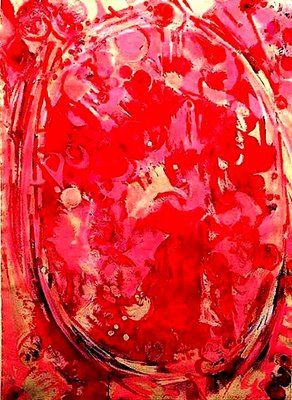
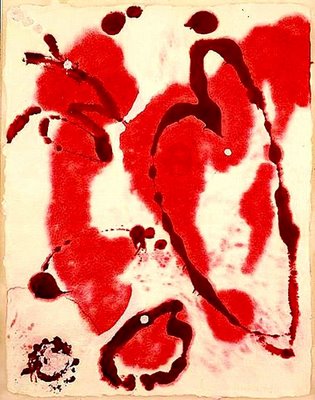

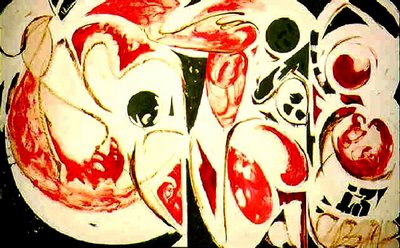

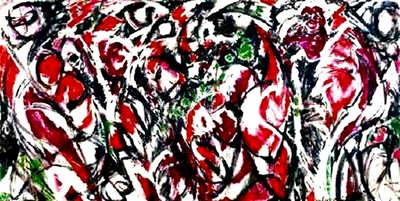




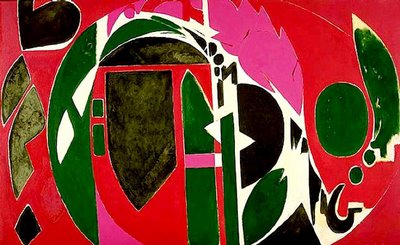






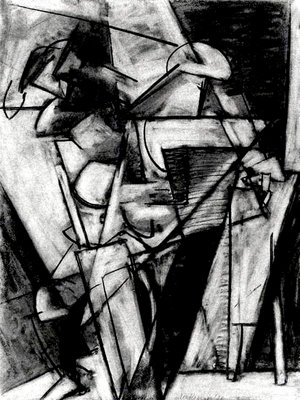



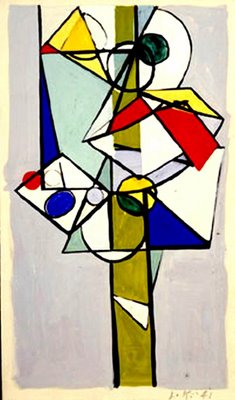

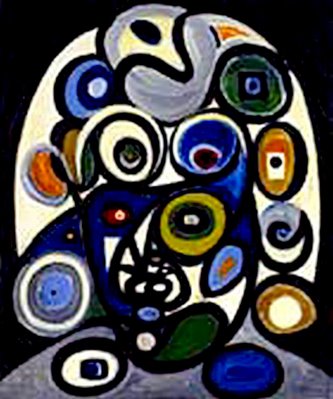
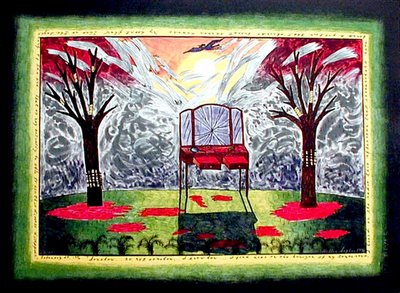

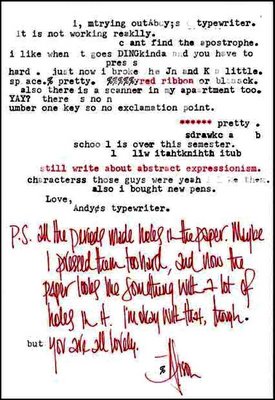

0 Comments:
Post a Comment
Subscribe to Post Comments [Atom]
<< Home